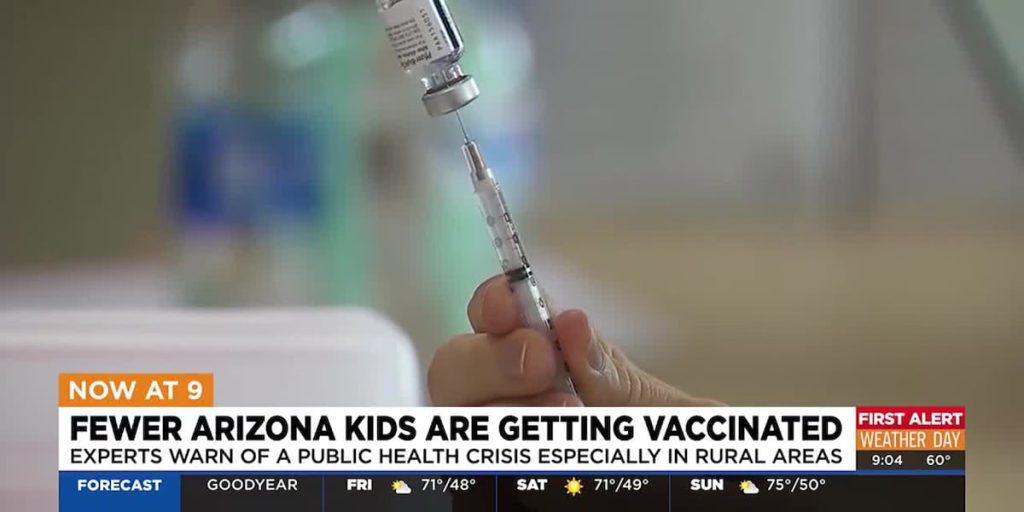Could Misinformation Be Fueling Declining Arizona Vaccination Rates?
Arizona, like many states across the nation, has witnessed a concerning trend of declining childhood vaccination rates. Public health officials are increasingly worried about the resurgence of preventable diseases as vaccination coverage dips below crucial thresholds for herd immunity. While several factors contribute to this decline, the proliferation of misinformation about vaccines stands out as a significant driver, casting a long shadow over public health efforts. Social media platforms, online forums, and even some healthcare providers have become breeding grounds for false claims about vaccine safety and efficacy, sowing doubt and fear among parents and caregivers. This misinformation often plays on existing anxieties, distorting scientific evidence and exploiting emotional vulnerabilities to dissuade individuals from vaccinating themselves or their children.
The consequences of waning vaccination rates are evident in the rising incidence of preventable diseases like measles, pertussis (whooping cough), and mumps. These diseases, once largely controlled through widespread vaccination, are making a comeback, particularly in communities with lower vaccination coverage. Measles, for example, is highly contagious and can lead to serious complications, including pneumonia, encephalitis (brain swelling), and even death. Pertussis, while often milder in adults, can be life-threatening for infants who are too young to be fully vaccinated. The resurgence of these diseases underscores the critical importance of maintaining high vaccination rates to protect vulnerable populations and prevent outbreaks.
Public health officials are working diligently to counter the spread of misinformation and restore public trust in vaccines. This multifaceted approach involves partnering with healthcare providers to provide accurate and evidence-based information to patients, leveraging social media platforms to debunk myths and promote vaccination, and collaborating with community organizations to reach underserved populations. Educational campaigns emphasize the safety and effectiveness of vaccines, highlighting the rigorous testing and monitoring processes that ensure their safety. They also underscore the individual and societal benefits of vaccination, emphasizing that vaccines not only protect individuals from disease but also contribute to herd immunity, shielding vulnerable members of the community who cannot be vaccinated.
However, combating misinformation is a complex challenge. The online environment often amplifies sensationalized and emotionally charged content, making it difficult for factual information to cut through the noise. Misinformation campaigns are often sophisticated, employing targeted advertising and manipulative tactics to reach susceptible audiences. Furthermore, addressing deeply ingrained beliefs and anxieties about vaccines requires empathy and understanding, not just scientific data. Building trust and fostering open dialogue with vaccine-hesitant individuals is crucial to overcoming resistance and promoting informed decision-making.
Several factors contribute to vaccine hesitancy beyond misinformation, including access barriers, cultural beliefs, and historical mistrust of the medical system, particularly within marginalized communities. Addressing these concerns requires a comprehensive approach that goes beyond simply providing information. Improving access to healthcare services, offering culturally sensitive communication, and building trust with communities that have historically been marginalized are essential steps toward increasing vaccination rates. Public health initiatives must focus not only on debunking misinformation but also on addressing the underlying social and economic factors that contribute to vaccine hesitancy.
The decline in vaccination rates poses a serious threat to public health. While misinformation plays a significant role in fueling vaccine hesitancy, it’s crucial to address the broader context of concerns. Effective strategies to improve vaccination rates must encompass a range of approaches, from countering misinformation to addressing access barriers and building trust with communities. A collaborative effort involving public health officials, healthcare providers, community organizations, and individuals is essential to protect communities from preventable diseases and safeguard public health. Restoring confidence in vaccines and ensuring widespread vaccination coverage is paramount to preventing the resurgence of dangerous diseases and maintaining a healthy and safe society. The fight against misinformation and the promotion of informed vaccination decisions are critical battles in the ongoing effort to protect public health.


